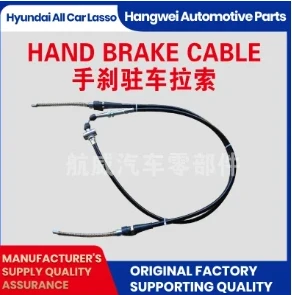clutch hose
Understanding Clutch Hoses A Vital Component of Your Vehicle’s Transmission System
The clutch hose is a critical element in the hydraulic system of a vehicle, particularly for those equipped with a manual transmission. It plays a pivotal role in connecting the clutch master cylinder to the clutch slave cylinder. As a conduit for hydraulic fluid, the clutch hose facilitates the proper functioning of the clutch system, enabling smooth gear shifts and overall vehicle performance. This article explores the importance of clutch hoses, signs of potential issues, and tips for maintenance.
The Role of Clutch Hoses
At the heart of a manual transmission system lies the clutch, which disengages the engine from the drivetrain to allow the driver to shift gears smoothly. When the driver presses the clutch pedal, it activates the master cylinder, which pushes hydraulic fluid through the clutch hose to the slave cylinder. This action releases the clutch, allowing the driver to change gears. The functionality of this system depends heavily on the integrity and performance of the clutch hose.
Clutch hoses are typically made of rubber, designed to withstand pressure and external elements. Over time, however, they can degrade due to wear and tear, exposure to heat, and the corrosive nature of hydraulic fluid. Understanding the signs of a failing clutch hose is essential for maintaining a reliable vehicle.
Signs of a Failing Clutch Hose
1. Fluid Leaks One of the most noticeable signs of a failing clutch hose is hydraulic fluid leaks. If you see fluid pooling under your vehicle, particularly near the clutch pedal or under the hood, it may indicate a damaged hose. The fluid is typically a clear or slightly oily liquid.
2. Soft or Spongy Clutch Pedal A soft or spongy feeling when pressing the clutch pedal often points to insufficient hydraulic fluid pressure, potentially caused by a leak in the hose. This issue can make it challenging to shift gears smoothly.
3. Difficulty Engaging Gears If you find it increasingly difficult to engage gears, particularly first or reverse, the problem could be linked to the clutch hose. Insufficient hydraulic fluid reaching the slave cylinder can prevent the clutch from fully disengaging.
4. Burning Smell A burning smell while driving may indicate that the clutch or hydraulic components are overheating. This could also be related to a failing clutch hose that’s not adequately transferring fluid.
clutch hose

Maintenance Tips
To keep your clutch hose in good condition, consider the following maintenance tips
1. Regular Inspection Schedule regular inspections of your vehicle's clutch system. A qualified mechanic can identify any signs of wear or damage to the clutch hose before they escalate into significant issues.
2. Fluid Checks Regularly check the hydraulic fluid levels in your vehicle. If you notice a decline in fluid levels, investigate possible sources of leakage, including the clutch hose.
3. Quality Replacement If you need to replace your clutch hose, opt for high-quality components. It’s worth investing in a reliable hose made of durable materials to ensure longevity and optimal performance.
4. Keep it Clean Maintaining a clean engine bay helps prevent dirt and debris from accumulating around the clutch hose, which can lead to premature wear.
5. Stay Informed Educate yourself about your vehicle’s clutch system. Understanding how the parts work together can help you identify issues early and discuss them intelligently with your mechanic.
Conclusion
In conclusion, the clutch hose is a crucial component that directly impacts your vehicle's transmission performance. By understanding its role, recognizing the signs of failure, and performing regular maintenance, you can ensure your vehicle operates smoothly and safely. A well-maintained clutch system not only enhances your driving experience but also extends the life of your vehicle. Don’t overlook this small yet essential part; it plays a significant role in the overall functionality of your vehicle’s transmission system. Regular attention to the clutch hose can save you from unexpected repairs and costly breakdowns in the future.
-
Workings of Clutch Pipe and Hose SystemsNewsJun.04,2025
-
The Inner Workings of Hand Brake Cable SystemsNewsJun.04,2025
-
The Secrets of Throttle and Accelerator CablesNewsJun.04,2025
-
The Hidden Lifeline of Your Transmission Gear Shift CablesNewsJun.04,2025
-
Demystifying Gear Cables and Shift LinkagesNewsJun.04,2025
-
Decoding Clutch Line Systems A Comprehensive GuideNewsJun.04,2025
